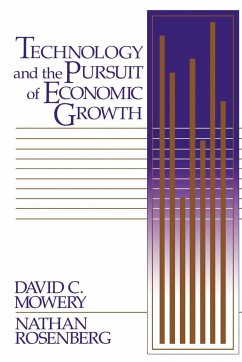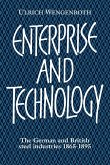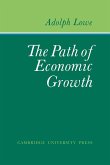Technology's contribution to economic growth and competitiveness has been the subject of vigorous debate in recent years. This book demonstrates the importance of a historical perspective in understanding the role of technological innovation in the economy. The authors examine key episodes and institutions in the development of the U.S. research system and in the development of the research systems of other industrial economies. They argue that the large potential contributions of economics to the understanding of technology and economic growth have been constrained by the narrow theoretical framework employed within neoclassical economies. A richer framework, they believe, will support a more fruitful dialogue among economists, policymakers, and managers on the organization of public and private institutions for innovation. David Mowery is Associate Professor of Business and Public Policy at the School of Business Administration, University of California, Berkeley. Nathan S. Rosenberg is Fairleigh Dickinson Professor of Economics at Stanford University. He is the author of Inside the Black Box: Technology and Economics (CUP, 1983).
Table of contents:
Part I. Introduction: 1. The need for a new framework for R&D analysis and policy; Part II. The Development Of The Institutional Structure, 1860-1940; 2. The growing role of science in the innovation process; 3. The beginnings of the commercial exploitation of science by US industry; 4. The US research system before 1945; 5. The organisation of industrial revolution in Great Britain, 1900-1950; Part III. The Development Of The Postwar System, 1940-1987; 6. The evolution of federal investment in research and development since World War II; 7. The US commercial aircraft industry; Part IV. New Environment, New Research Organisations: 8. The changing context of innovation, 1980-present; 9. International and domestic collaboration in research and development; 10. The merger of technology and trade policies; 11. Concluding observations; Bibliography.
This book demonstrates the importance of a historical perspective in understanding the role of technological innovation in the economy. The authors examine key episodes and institutions in the development of the U.S. research system and in the development of the research systems of other industrial economies.
Table of contents:
Part I. Introduction: 1. The need for a new framework for R&D analysis and policy; Part II. The Development Of The Institutional Structure, 1860-1940; 2. The growing role of science in the innovation process; 3. The beginnings of the commercial exploitation of science by US industry; 4. The US research system before 1945; 5. The organisation of industrial revolution in Great Britain, 1900-1950; Part III. The Development Of The Postwar System, 1940-1987; 6. The evolution of federal investment in research and development since World War II; 7. The US commercial aircraft industry; Part IV. New Environment, New Research Organisations: 8. The changing context of innovation, 1980-present; 9. International and domestic collaboration in research and development; 10. The merger of technology and trade policies; 11. Concluding observations; Bibliography.
This book demonstrates the importance of a historical perspective in understanding the role of technological innovation in the economy. The authors examine key episodes and institutions in the development of the U.S. research system and in the development of the research systems of other industrial economies.








